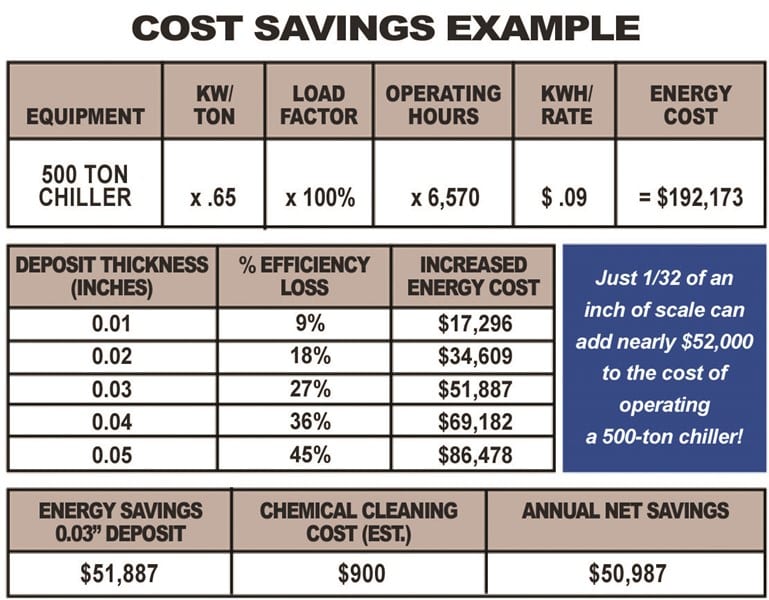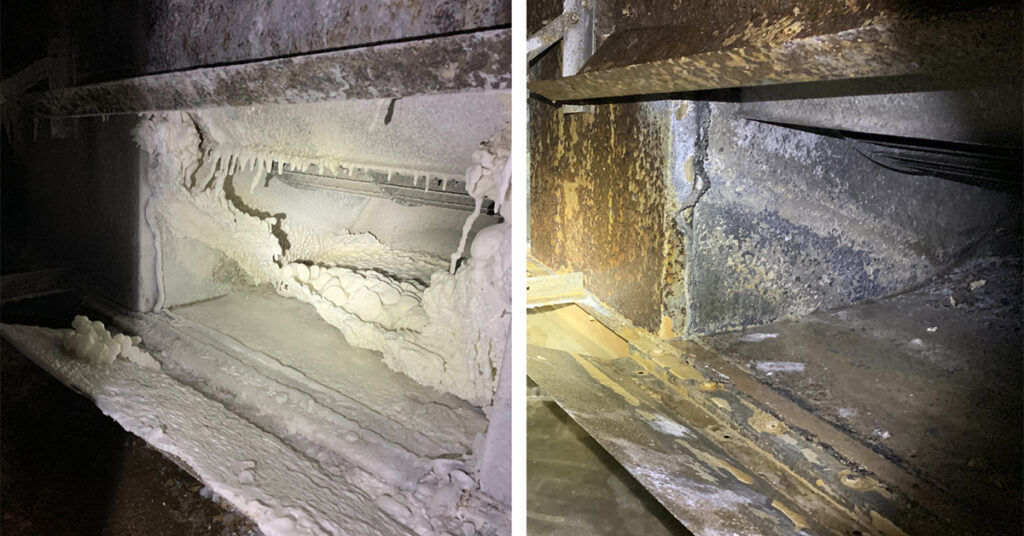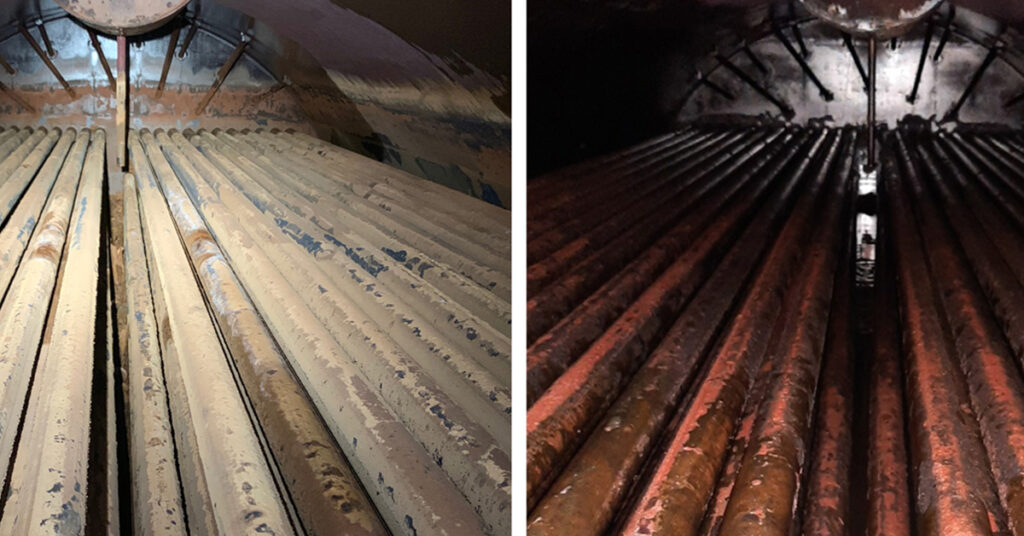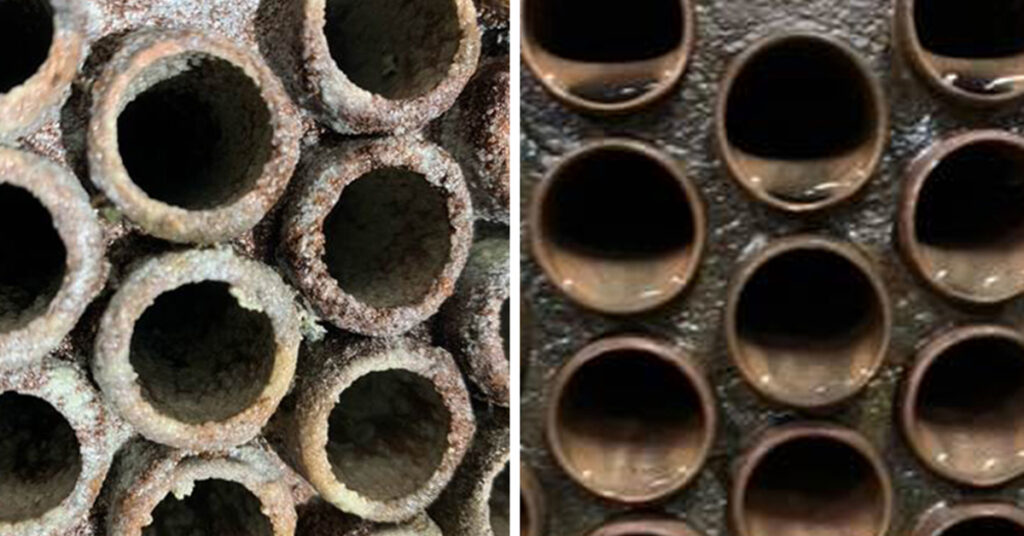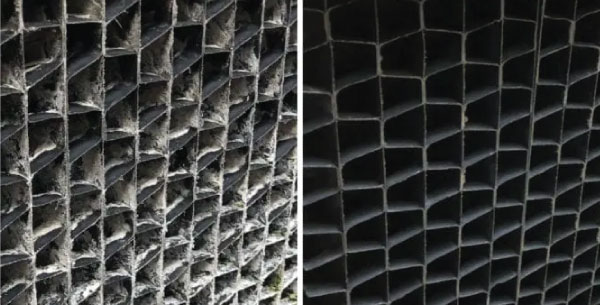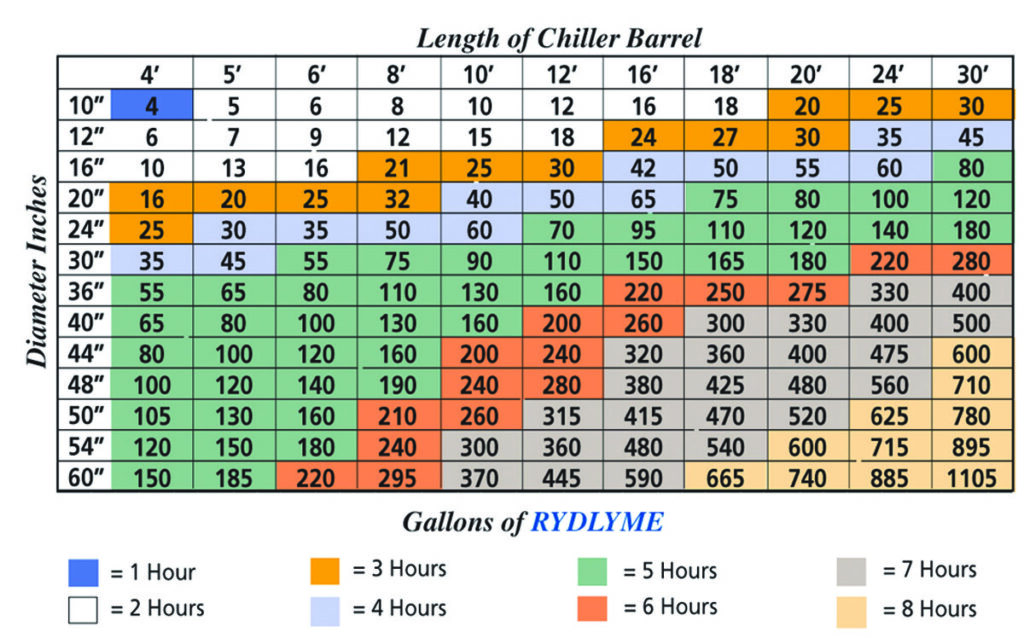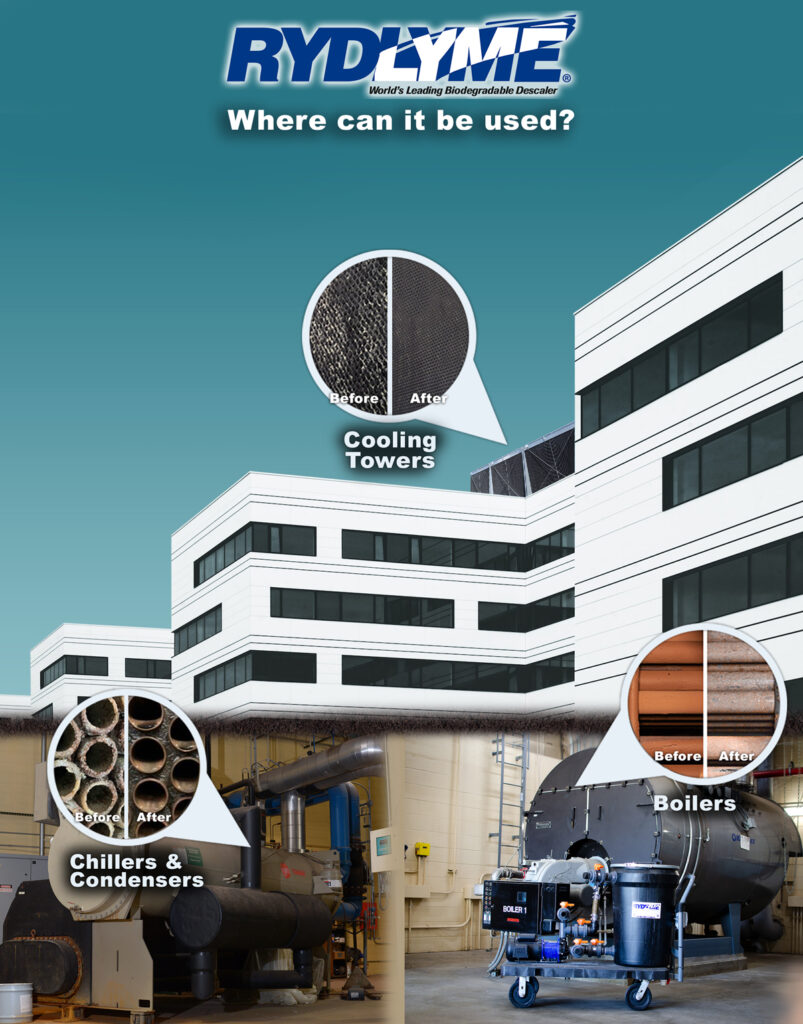
RYDLYME for Cooling Tower Cleaning
The basic principal of a cooling tower is to cool the water that has picked up heat generated by equipment within the facility. The operation begins in the tower basin where the cooled water is pumped out into the facility and utilized for cooling the equipment on the tower system. As that equipment is cooled, the water picks up the heat and returns to the top of the cooling tower.
The hot water is distributed onto a hot deck or through the sprayer nozzles that evenly distribute it over the tower fill media. The tower fill media is designed to increase surface area, as well as contact time between air and water. This enhances evaporation and allows further cooling of the tower water. The water then falls into the tower basin where it is then pumped back into the facility continuing to cool the equipment.
Scaling within a cooling tower can restrict the water distribution of spray nozzles, reduce the water flow through the openings of a hot deck and restrict the airflow within the tower. Adding RYDLYME to the cooling tower basin allows the tower’s transfer pump to circulate the solution throughout the entire cooling system while in operation.
The following is a detailed procedure for cleaning a cooling tower system or an evaporative condenser/fluid cooler with RYDLYME. To ensure a successful cleaning, please contact Apex Engineering Products Corporation for technical assistance prior to starting the cleaning procedure.
- Close make up water valve to tower basin.
- Turn off all chemical or non-chemical water treatment, conductivity meters and pH meters.
- It is recommended that all loose water scale, lime, mud, rust and other foreign matter be manually removed from tower basin prior to starting the cleaning.
- Lower the water level in the tower basin to a point where the pump can maintain circulation without cavitation and close the bleed-off valve.
- It is recommended that the fans be turned off during the cleaning.
- Determine the proper amount of RYDLYME to be added to the system. Please note that the amounts recommended in the chart are just guidelines and that your application may require 2-4 times the chart amount, depending on the severity of the deposit build-up in your system.
- To minimize excessive foaming, you may slowly add required amount of RYDLYME to the tower basin.
- The bubbling and foaming you will observe is a natural reaction of the RYDLYME dissolving the water formed mineral deposits within the system.
- Once the RYDLYME is in the tower system, allow to circulate. Start charting your pH readings or performing calcium spot tests to measure the effectiveness of the RYDLYME solution during the cleaning (“Testing the Effectiveness” is available on our website or contact us directly for a copy). If the RYDLYME cleaning solution expends prior to the completion of the recommended circulation time, there is more scale in the system. It is recommended that you repeat steps 6-9 to complete the cleaning.
- It is recommended that the RYDLYME cleaning solution be cycled out of the system to prepare it for normal operation. At this time, strainers should also be removed, inspected and cleaned as well.
- Once the cleaning material has been cycled from the tower system, turn your conductivity, pH meters or any other equipment back on. Return the make-up water and bleed off valves per the manufacturer’s recommendations.
- Lastly, resume normal system operation.
RYDLYME for Boiler Tube Cleaning
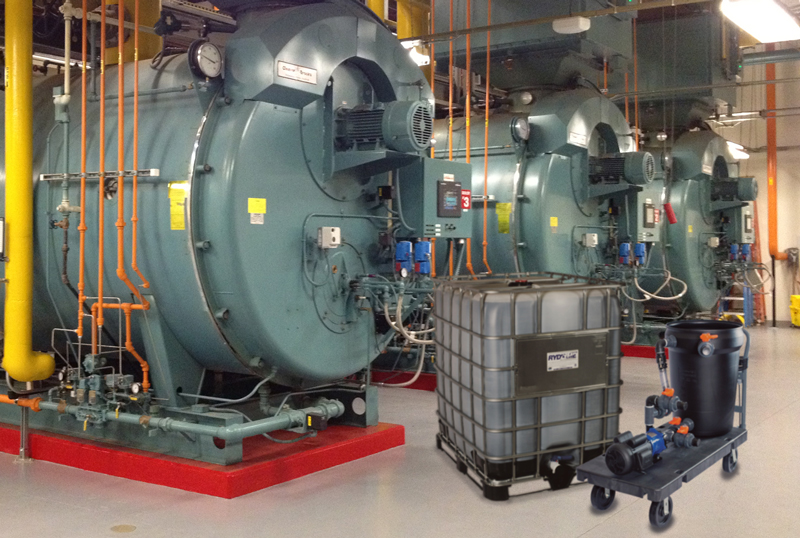
Boilers represent the “heart” of many institutions including: airports, condominiums, dry cleaners, ethanol production, factories, food companies, general industry, hospitals, hotels, housing authorities, medical centers, office buildings, power utilities, schools, shopping malls, and any other locations where hot water or steam is an essential part of the operation.
Scale is the accumulation of minerals such as calcium and magnesium on the water side of boiler heating surfaces. When boiler water turns to steam, residual minerals are left in the boiler. These minerals then settle out of the boiler water and form scale on the boiler heating surfaces. If the water delivered to the boiler contains even small amounts of scale-forming materials, the internal heating surfaces of the boilers can soon become coated with scale, leading to overheating, increased fuel consumption and subsequent tube failures. Even light or spotty scale deposition can be the foundation for hot spots, cracking, and distortion. For this reason, regularly cleaning the interior of steam generator systems is imperative.
Boiler maintenance is crucial to the continued efficient operation of your facility. One component to your boilers preventive maintenance program should be an annual cleaning to remove mineral scales that have accumulated within the boiler. These deposits are great insulators that inhibit heat exchange and cause the boiler to lose heat transfer, thus efficiency. For instance, as you can plainly see from our chart, scale that is only 3/16” thick will cause the boiler to use 27% more fuel! A common unknown fact is that boiler tube failures account for the majority of a power plant’s forced outages. This, all because the boiler may be suffering from inadequate heat transfer.
Water scale deposited in steam boilers is usually harder and denser than deposits found in hot water boilers. This is due primarily to the temperatures involved. But even the smallest amount of boiler scale deposits hamper good over-all heating efficiency. These mineral deposits may occur from poor blow down and/or poor water treatment practices.
The following is a basic procedure for cleaning boiler tubes with RYDLYME. To ensure a successful cleaning, please contact Apex Engineering Products Corporation for technical assistance prior to starting the cleaning procedure – click here to watch a video.
- Shut down boiler.
- Blow down with pressure still on.
- Drain and flush unit.
- Close steam valve.
- Add RYDLYME, and then top off with water.
- Circulate through the drain or low point and return from the pressure relief valve or high point of the boiler back to a vented container.
- Circulate for 4-8 hours depending on volume.
- Open steam valve.
- Drain, flush, re-fill and start up.
RYDLYME for Chiller & Condenser Cleaning
When isolating and cleaning just the barrel on a chiller, this chart will assist the technician in ascertaining the correct amount of RYDLYME required. RYDLYME, when circulated through the tubes, will completely clean the tubes, including the enhancements. A RYDLYME cleaning will insure optimal efficiency is restored, bringing approach temperatures down to OEM specifications.
- When cleaning a chiller barrel, add the recommended amount of RYDLYME per the chart, then flood the remainder of the bundle with water to obtain circulation.
- Circulate the RYDLYME and water solution through the lowest point of the bundle and return out a high point.
- If the return point you are planning to use is below the top tubes of the barrel, make sure your return hose is elevated above the highest point of the bundle.
- This step will insure all the high side tubes are flooded and cleaned and avoid the potential of them becoming air bound.
- After circulating RYDLYME for the prescribed time and determining the tube bundle is clean, always perform a thorough water flush of the bundle.
- Return chiller to service.
RYDLYME FEATURES:
- Biodegradable
- Dissolves 2.2 lbs of scale per gallon of RYDLYME
- NSF/ANSI 60 certified
- Non-corrosive and safe for personnel
